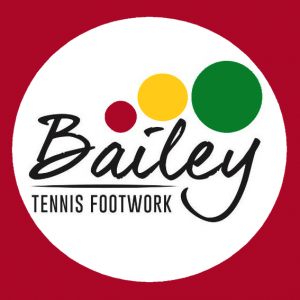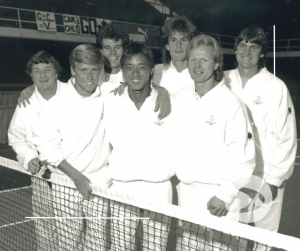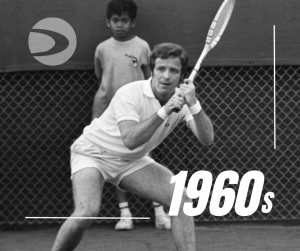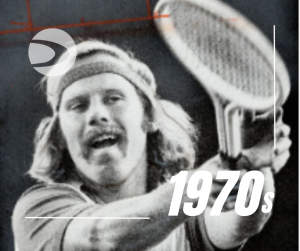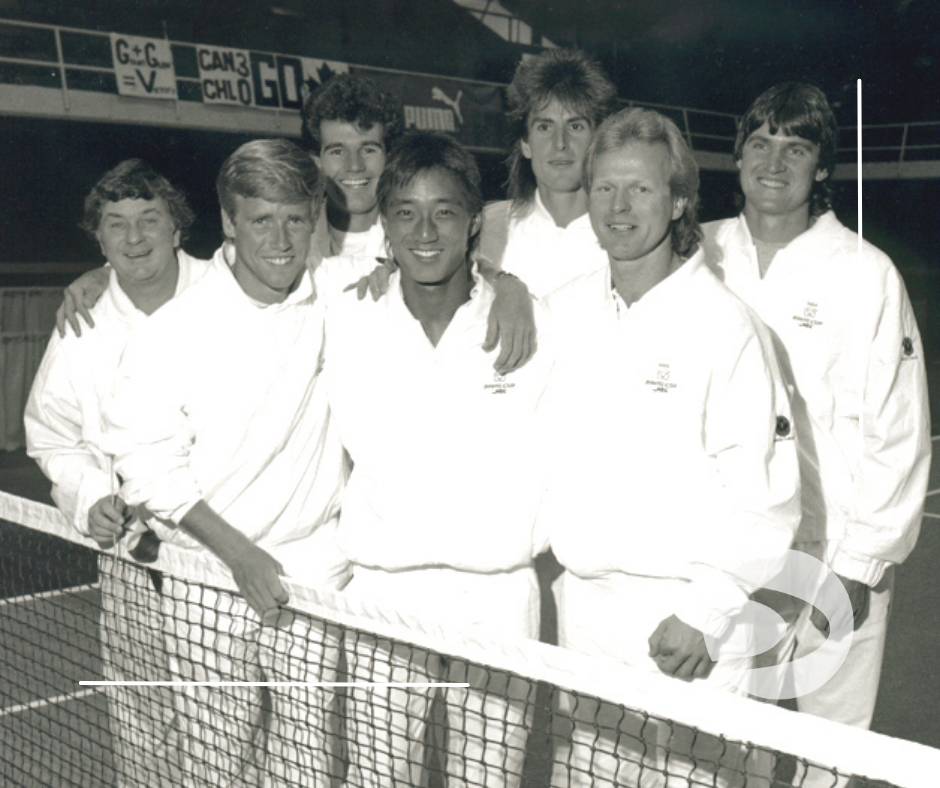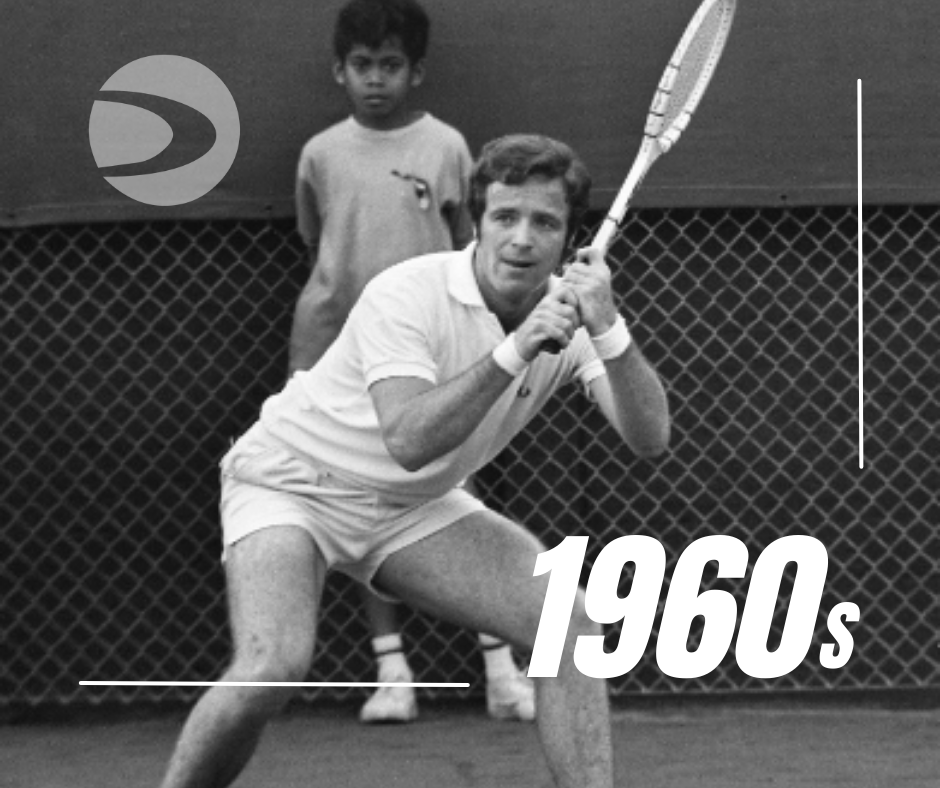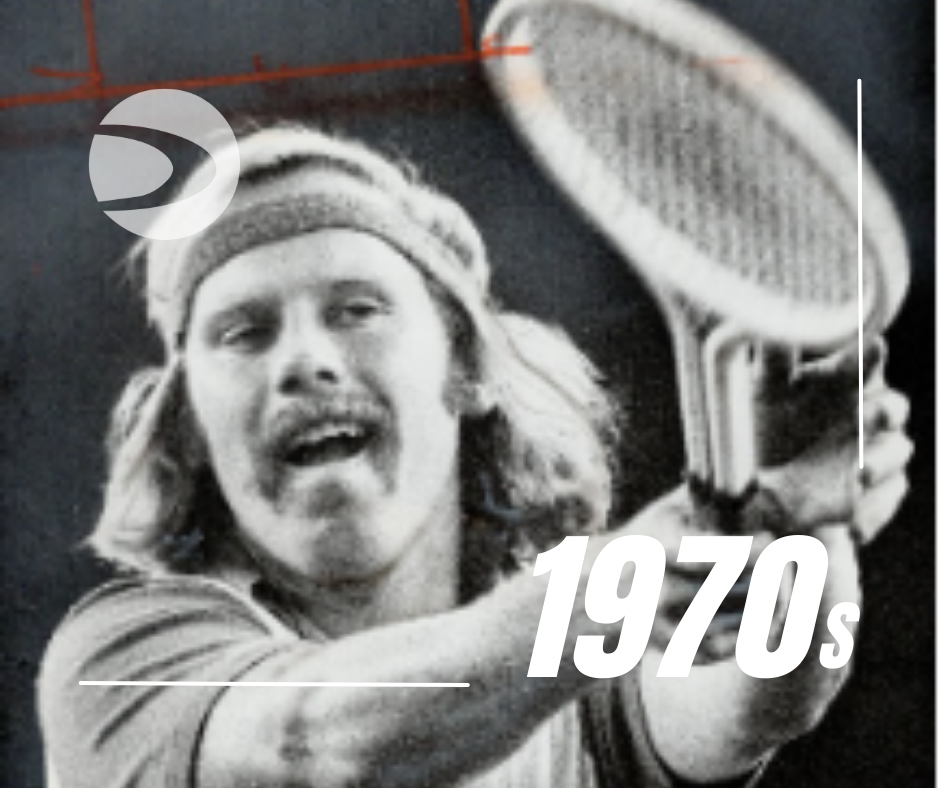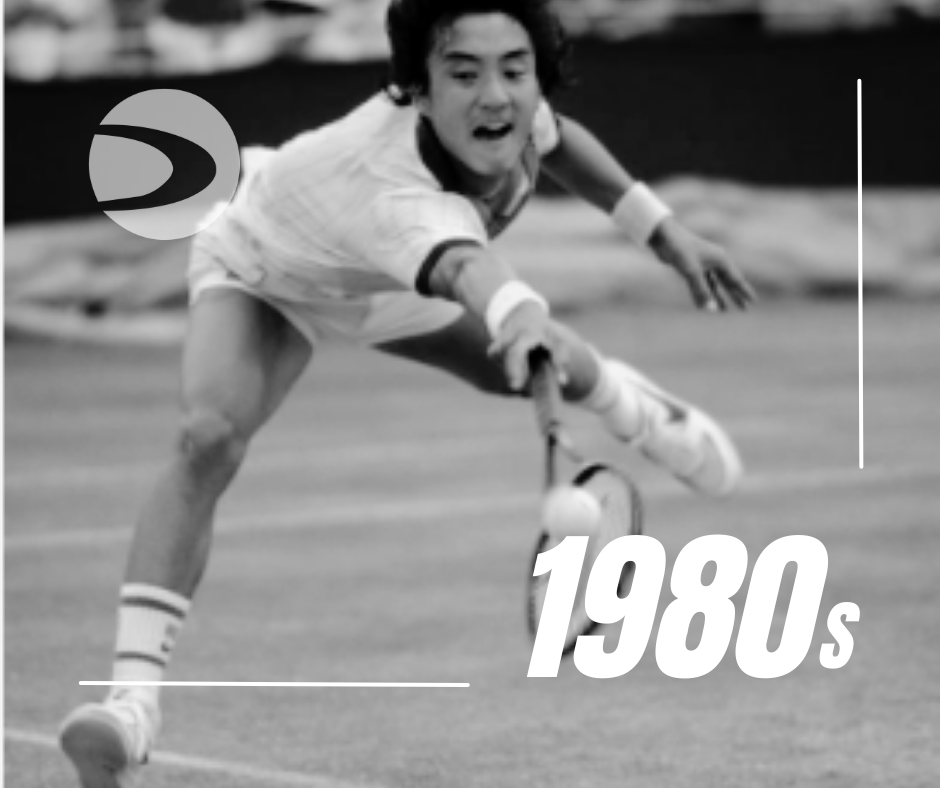BY DAVID BAILEY
This is dedicated to a book that I love.
It was written in such a way that it has always been an inspiration to me – it is my favorite book of all time!
The name of the book is “Zen in the Martial Arts” – written by author Joe Hyams. In this book, Joe talks about how being involved in Martial Arts relates to his daily living, what he has learned through the sport itself (martial arts) and the lessons taught to him by his several ‘sensei’ master teachers. 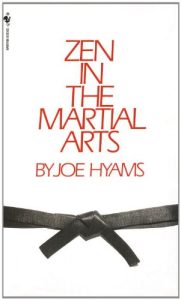
What I love about martial arts is that a lot of philosophy, wisdom and life lessons are taught while competing. There is a lot of character building, respect for the sport and its history.
The role of the master coach is to teach the “real” reason for fighting, which is to grow as a person as much as a competitor. It would be nice if tennis teaching could take the same approach.
In the following pages, I have taken Joe Hyams thoughts and related them to tennis. I love the way he has given each paragraph a title that sums up his feelings.
“What is Zen?”
Zen is an inner knowing. Its ultimate aim is to free the individual from anger, illusion, and false passion.
Zen relies on certain principles which open up a potential source of inner strength.
Tennis can be a way to work off your hostilities. Give you consciousness awareness, taking control of your life and heightened self awareness.
“Share Not Show”
I am not going to show you my method. I am going to share it with you.
If I show it too you it becomes an exhibition, and in
time will be pushed so far into the back of your mind that it will be lost.
By sharing it with you – you will not only retain it forever, but I too will improve. i.e. the teacher learns from the lesson.
“The Court Is a Dojo”
The tennis court is a dojo (sparring area when competing in martial arts) – a place of enlightenment.
A dojo is a miniature cosmos where we make contact with ourselves – our fears, anxieties, reactions, and habits.
It is an area of confined conflict where we confront an opponent who is not an opponent, but rather a person engaged in helping us understand more about ourselves. It is a place where we can learn a great deal in a short time about who we are and how we react to the world.
These conflicts that take place inside the dojo help us handle the conflicts that take place outside. The total concentration and discipline required to stay fit carries over to daily life. The activity in the dojo calls on us to constantly attempt new things, to create a source of learning – in Zen terminology; a source of self enlightenment.
“Do Not Seek”
With my teachings I do not seek out the student, and do not prevent him/her from leaving. If the student wants guidance in climbing the STEEP PATH to expertise, then I will act as a guide on the condition that the student is prepared to take care of themself along the way.
The instructor’s function is to delegate to the student exactly those tasks which he is capable of mastering, then to leave them as much as possible to themselves and their inner abilities.
“Experience It”
How do we explain the taste of sugar? Verbal description does not give us the sensation. To know the taste, one must experience it. The philosophy of teaching is not meant to be mused over or intellectualized, it is meant to be experienced. Thus, inevitably, words will only convey part of the meaning.
“Enlightenment”
Enlightenment simply means recognizing the inherent harmony of ordinary life. Knowing others is wisdom, knowing you is enlightenment.
“Empty Your Cup”
A Japanese Zen master received a university professor who came to study about Zen. It was obvious from the start of the conversation that the professor was not so much interested in learning about Zen as he was about impressing the master with his own opinions and knowledge.
The master listened patiently and finally suggested they have tea – the master poured his visitor’s cup and then kept pouring. The professor watched the cup overflowing until he could no longer restrain himself. “The cup is overfull, no more will go in”.
“Like this cup”, the master said “you are full of your own opinions and speculations, how can I show you Zen until you first empty your cup?”
This doesn’t mean you don’t apply a critical mind to The Bailey Method. In fact, I welcome discussions – even arguments. But at least empty your cup and try the approach.
“Process Not Product”
It should never be just a workout, but a lesson in life.
You will never learn to do any endeavor properly unless you are accustomed to having everything come easy to you, but this is not the way of life. We are not talking about patience – this is to have the capacity of calm endurance. Rather, it is actively working towards a goal without setting a limit on how long you will work. – in turn this will eliminate deadlines and weighted lifted from your body. Be concerned with the process, and then you will eliminate anxiety.
For the uncontrolled there is no wisdom, nor for the uncontrolled is there the power of concentration, and for him without concentration there is no peace – and for the unpeaceful how can there be happiness?
“Seize The Moment”
You must learn to live in the present. Zen teaches that life must be seized at the moment.
In the present there are no regrets as they are in the past. By thinking of the future, you dilute the present. The time to live is now. If you feel distracted remember “Seize the moment”. Focus on the moment; don’t let the mind wander to the past or future.
“Conquer Haste”
Those who have patience in the trivial things in life and control themselves will one day have the same mastery in the great and important things.
“Know your Limits “
You will never learn anything new unless you are ready to accept yourself WITH your limitations. You must accept the fact that you are capable in some directions and limited in others, and you must develop your capabilities.
Instead of trying to master hundreds of techniques, a champion may only use 4 or 5 techniques over and over again. Look at Raphael Nadal; he uses techniques which he has perfected and can depend on.
The past is an illusion. What you lose in agility and flexibility (as you get older), you make up with knowledge and constant practice.
“Even The Masters Have Masters”
We are all learners. Learning everyday is a wonderful thing. The day we stop learning is the day we stagnate.
An important key to learning is for you to surround yourself with the right people and ask particular questions. Don’t lose that opportunity to ask questions to people who know the answers that you are seeking.
You may never get a second opportunity. One of the greatest compliments you can give to someone is genuinely asking for their advice or consciously seeking their knowledge.
“Lengthen Your Line”
Draw a line on the floor 5 foot long. How can you make this line shorter?
Answer: Draw another line longer.
It is always better to improve and strengthen your own line or knowledge than to try and cut your opponent’s line.
“Do Not Disturb”
“We all have time to either spend or waste time and it is our decision what to do with it. But, once passed it is gone forever”.
It is the most precious commodity we have. View your time as divided into infinite moments or transactions or contracts. Anyone who is stealing my time is stealing my life because they are taking my existence from me.
You must think “Is it worth it?”
“Active Inactivity”
Active inactivity is consciously doing nothing. The masters of good phrasing are the men you pay as much time to pause and silence (non action) as to action.
Plan to do nothing, as you study the situation. I believe doing nothing can sometimes be more important than doing something. The mind should be nowhere in particular.
If you remain centered and in control of your body, then you don’t overreact or underreact. i.e. like running a bush track at top pace – you must trust your feet. You must learn to allow patience and stillness to take over from anxiety and frantic activity for the sake of owing something.
The good player is patient. He is observant, controlling his patience, and organizing his composure. Be patient in seeking a solution or opening, and then fully commit yourself to the resolution you think advisable.
“Extend Your Ki”
Ki – the invisible life force. It’s hard to explain but you can experience it. The mind is truly a source of power and when the body and the mind are coordinated, Ki manifests itself.
Ki or your one point, or tai-ten is about where your centre of gravity is. Ki is defined as an INNER ENERGY that can be directed from “one point”. It can be combined with gravity to produce deadweight and extreme heaviness in the body.
If you imagine all your energy coming into a point in your midsection, running down through your legs and up through your trunk, through your arms, and up into your head – and then, with your mind, you project this energy through your body in the direction you wish. This is referred to as extending
your Ki. Ki can be sent in any direction, depending on what you plan to do. It is a spontaneous flow of steady strength (one energy) flooding your entire body without consciously seeking it. Merely knowing that ki exists is empowering.
“Zen Breathing”
When you breathe you must fill your entire lungs with air. Most people use only the top portion of their lungs. They do not fill up the bottom part. If you breathe correctly you will use the bottom of the lungs as well as the top, the same way you automatically breathe when you are asleep.
Imagine that the air you breathe is fog, and visualize it coming through the nose and throat into the abdomen. Let it circulate there and through the body and your limbs. Visualize it as it travels around the various channels and meridians of your body. When you exhale, see the fog leaving your mouth.
In the beginning, you may become overly conscious of your breathing and begin to pant as though you were doing heavy exercise. When this happens, just start over again.
Technique:
Start by striking two blocks together. At the sound of the sharp clack, inhale slowly and evenly through the nostrils, mouth gently closed so the abdominal wall is stretched, let the breath circulate within the body for 10 seconds until the sound of the wood on wood strikes again.
Establish a Rhythm:
At first you will find you will be stiff and uncomfortable, but as you progress your body will warm and relax. Try to visualize the breath as fog and other thoughts will be kept from your mind and with total concentration on breathing you will relax.
Such a simple thing as breathing is subject to being relearned and mastered. If you are in a stressful or anxiety-provoking situation and your breathing becomes irregular and fear distorts orderly thought processes, which will tend to immobilize body and mind, then use the Zen breathing technique.
Breathing – relaxes, refreshes and calms. It restores confidence and strength.
“Go With The Current”
When someone hits a tennis ball, he is extending his Ki towards the ball and it starts to flow when he thinks he will hit the ball – even before his body moves. His action is directed by his mind.
The principle underlying Aikido (a form of martial arts) is to yield to an oncoming force in such a way that it is unable to harm you, and at the same time change its direction by pushing it from behind instead of pushing it in front.
The principle of AVOIDING conflict and never opposing an aggressor’s strength head-on is the essence of Aikido. He is like water in that it falls through the fingers of those who try to clutch him, i.e. try to deflect anger in another direction.
Softness triumphs over hardness, feebleness over strength. What is more malleable is always superior over that which is immovable. This is the principle of controlling things by going along with them, of mastery through adaptation.
I always think of Roger Federer and his ability to adapt. He is the master of being relaxed and triumphing with smooth flowing adjusting (no panic) responses. I see Federer as a Zen Aikido master and Raphael Nadal as a brute force warrior. Most importantly, good luck to them both. It is hard to change your innate intrinsic nature! You have to go with your own flow. I suppose this is why there are so many different styles in tennis and martial arts.
“Anger without Action”
It’s not bad to have aggressive or hostile feelings towards others. When you acknowledge these feelings you no longer have to pretend to be that which you are not. You can learn to accept these moods. What is bad, however, is to let them dictate your nature. When you unleash your aggression and hostility on another person, it inspires aggression and hostility in return, the result is then conflict. Anger doesn’t demand action. When you act in anger, you lose self control.
Question: How can you control someone else if you can’t control yourself? – When you lose your temper you lose yourself. Control your emotion or it will control you.
Answer: The angry man will defeat himself in battle as well as in life.
“Recognize a True Threat”
Never make an instant decision even when it is between friends. The proper system is to think twice more. Patience is part of it. To avoid being intimidated THINK more and REACT less.
“KIME: Tighten Your Mind”
You can be so concerned about demonstrating what you have learned that your focus can be shattered.
Don’t ANTICIPATE – just RESPOND. Don’t be concerned with the right footwork. TRUST YOUR TRAINING. Let your training lead you NATURALLY to the right position. The immediate objection is to take the ball early and make clean contact.
Don’t think about blocking (volley, return) but intercepting. Your mind needs to be where it belongs, i.e. keeping the pressure on, so you mess up your opponents footwork, balance and ability to move. Focus on being efficient and effective, not being exhausted and accomplishing nothing.
Concentrate all your energy on the body and mind on one specific target or goal at one time. The secret of kime (tightening your mind) is to exclude all extraneous thoughts, thoughts that are not concerned with achieving your immediate goal!
A good tennis player puts his mind on one thing at a time. He takes each thing as it comes, finishes with it and passes onto the next. Like a Zen master, he is not concerned with the past or the future, only with what he is doing at the moment.
Because his mind is tight, he is calm and able to maintain his strength in reserve. This will allow there to be room for one thought only, which will fill his entire being as water fills a jug. You waste an enormous amount of energy because you did not LOCALIZE and FOCUS your mind. Always remember in life as well as on the tennis court an ‘unfocused’ or ‘lose’ mind WASTES ENERGY.
When you work with total concentration (and this takes practice) you will accomplish more by the end of the day AND be less tired than on those days that you YOU ARE EASILY DISTRACTED!
“Mushin: Let Your Mind Flow”
When you act with unconscious awareness, you just act. Like when you throw a ball to me, and without thought your hands go up and catch it – it just happens.
Mushin means “no mind”. No mind is when the actor is separated from the act and no thought interferes with action. The unconscious act will always be the most free and uninhibited. When Mushin functions, the mind moves from one activity to another, flowing like a stream of water and fills every space.
The mind (and feet for that matter – they always work in unison) must always be in a state of ‘flowing’, for when it stops anywhere that means the flow is interrupted and it is this interruption which is injurious to the well being of the mind.
Responses need to be instinctive and immediate – How? – With long hours of practice and confidence in your teacher and his teachings.
Self consciousness must be secondary to concentration.
Your mind must move freely and respond to each section immediately so there is no self involvement.
If you are fearful your mind will freeze, motion will stop and you will be defeated. Remember, if your mind is fixed on victory or defeating your opponent, you will be unable to function automatically. You must allow your mind to flow freely. The instant you become conscious of TRYING for harmony and make an effort to achieve it, that very thought interrupts the flow and blocks the mind. i.e. when you seek it you cannot find it.
Keep at your training so that you act unconsciously instead of intellectually.
When one eye is fixed upon your destination, there is only one eye left with which to find the way.
If you don’t understand yourself you will lose 100% of the time. If you understand yourself you will win 50% of the time. If you understand yourself and your opponent, you will win 100% of the time. When I talk about winning here it is understanding the lessons learnt.
“Effortless Effort”
Relax. Stop straining. The less effort, the faster and more powerful you will be. It is the caring or desire which stands in the way of effortless effort.
Stop caring, don’t try too hard.
After you practice something for a long time, it becomes second nature. Don’t be concerned with making contact with the ball; just swing the racket without conscious effort. Let it happen.
Relaxation and concentration go hand in hand. However, too much concentration defeats itself. If you are truly relaxed, and allow the body and the unconscious to do their share, instead of working the conscious mind overtime, concentration can become effortless.
What stands in the way of effortless effort is caring, or a conscious attempt to do well.
The mind of a perfect man is like a mirror. It grasps nothing. It expects nothing. It reflects but does not hold. Therefore the perfect man can act without effort.
To me, effortless effort is like “being in the zone”, everything seems easy!
“Make a Friend of Fear”
You cannot run away from fear. In fact, the tennis court is the perfect place to learn to face fear. Most of the time we generate our own fear and this is especially true when we confront an unfamiliar situation that shatters confidence.
You must develop the confidence to handle fear. In the heat of a battle you must be calm, as fear is shadow not substance.
Lack of self confidence causes problems.
It is far better to face a fearful situation than to ignore it, to accept the fact that it is alright to be fearful. By visualizing possibilities over a period of time, then you reduce the fears to their proper proportions.
“Confident Seeing”
The mind is like a fertile garden. It will grow anything you wish to plant – beautiful flowers or weeds. Therefore, it is with successful, healthy thoughts or with negative ones that, like weeds, strangle and crowd the others. Do not allow negative thoughts to enter your mind for they are weeds that strangle confidence.
Visualize success rather than failure. Negative thoughts are overpowering only if you encourage them and allow yourself to be overpowered by them.
“The Power of Focus
Bruce Lee would stand a man five feet from the edge of a pool. Place his hand, fingers outstretched on the man’s chest. Then close his fist – a movement of ¼ inch and send the man flying back into the pool. How did he do it?
Relax – then bring every muscle into play and concentrate all the force into the fist. To generate great power you must first TOTALLY RELAX, gather your strength, then concentrate your mind and all your strength on hitting the target (good analogy is the serve). This is called FOCUSED CONCENTRATION.
Good cue words: Relax – Gather – Contact
“Multiple Options”
Serenity is achieved by fully extending yourself in what you do, and knowing that you have done everything you are capable of doing. You need experience, excellence and self knowledge. You will not be nervous about your performance if you are functioning within an area which you have fully explored.
With detached calm, you are capable of making rational decisions from many possible options even when facing very threatening situations. When you are calm and sure of yourself and your capabilities, you can respond with force as you can respond gently.
This state of tranquility is likened to having a mind “like still water”. One learns to go with the flow of life, the current of existence. When an untoward event happens in your life, react to it without haste or passion. Realize that in almost every instance you probably have more alternatives than you think you have. Hold still a moment before acting or reacting and consider the alternatives. Then having decided on a course of action, proceed calmly.
“Life Without Zen”
I believe one can learn much about Zen from any activity that one is engaged in by remaining aware of one’s inner reactions. The key is a constant exercise of awareness, vigilance of the mind and relaxation of the body. Applying the principles of Zen frees an individual from concern, tension, and anxiety about winning or losing.
Good philosophy – Lose graciously and accept defeat as part of the learning process.
“The Way of Life”
A man is born gentle and weak
At his death he is hard and stiff
Green plants are tender and filled with sap
At their death they are withered and dry
Therefore the stiff and unbending is the attitude of death
The gentle and yielding is the discipline of life
Thus an army without flexibility never wins a battle
A tree that is unbending is easily broken
The hard and the strong will fall
The soft and the weak will overcome
“Winning by Losing”
The only reason men fight is because they are insecure; one needs to prove he is better or stronger than the other. The man who is secure with himself has no need to prove anything with force, therefore he can walk away with dignity and pride. He is the true martial artist, a man so strong inside that he has no need to demonstrate his power.
“Higher Purpose”
I hope after reading this part of the essay on Zen in Tennis you can see a higher purpose for learning and teaching the wonderful game of tennis. It is so much more than just hitting a ball over the net.
Walking onto the court should be like a dojo. The game of tennis has so much to teach about life and our attitude to winning, losing and competing.
Life should be approached with passion, belief in ourselves and a real sense of fair play and putting our heart into everything we do!!
By playing tennis we should appreciate the fact that we can jump, slide, smash and most importantly approach both victory and defeat with a smile on our face and a firm handshake.
David Bailey, Contributing Editor
Visit Bailey Tennis Footwork

